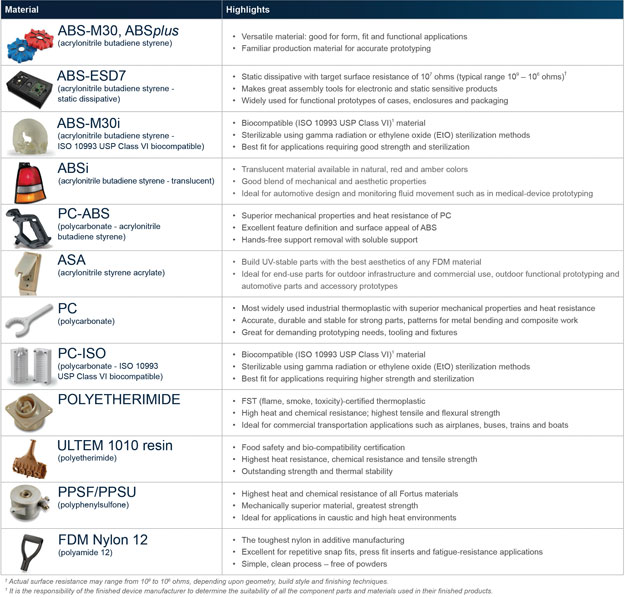Using 3D Printers to Create Architectural Models
Material Options
For architectural models, the most appropriate and common printing materials to use are thermoplastics which can respond to the small amounts of heat used in the 3D printers. There are, of course, a wide range of such plastics with a correspondingly wide range of characteristics and capabilities. Different types of models may require that different types of plastic be used or different presentation needs may dictate different appearances. The choice of plastics will depend on the type of printing technology being used, namely FDM thermoplastics or PolyJet photopolymers.
FDM Plastics
A notable feature of plastics used for FDM 3D printing is the inherent strength that they can offer. That means wall or features that are actually very thin when printed to scale can retain their rigidity and integrity. Nonetheless, some support elements during production may still be needed to allow the proper shapes to be printed. This group of plastics includes such well known polymers as ABS or nylon and is commonly available in a range of compressive and tensile strengths. They are also readily be provided in a range of colors, although white, black, and neutral/tan are the most common.
Photopolymers
This group of plastics offers a range of specialty capabilities. Some are rigid while others are more flexible. Some are solid opaque color while some are clear. Mechanical and thermal resistant properties vary according to the plastic material selected as well. This group includes plastics similar to polypropylene, high-density polyethylene (HDPE), polystyrene, Plexiglas, polycarbonate, and even EPDM. Bio-based plastic products are also available. The choice of photopolymer material does not need to be limited to a single plastic. Rather, it can be useful to mix materials to provide variety in models as needed. For example, plexiglass windows could be printed that fit into openings in opaque walls printed separately, or they could be printed in the same job with no assembly required. Overall, photopolymers offer a wide range of variations on visual and finish options.

Image courtesy of Stratasys, Ltd.









